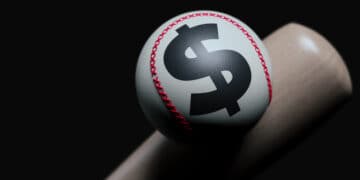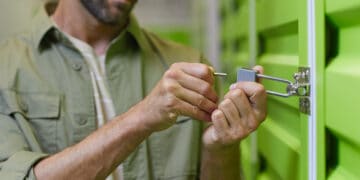In This Article:
- A Meeting with Nassim Taleb
- Black Swan Events
- Are You Antifragile?
- Dr. Boom and Doom’s Latest Warning
- How to Make an Antifragile Portfolio
“Not seeing a tsunami or an economic event coming is excusable; building something fragile to them is not.”
Nassim Taleb
Nassim Taleb is not one to mince words…
I learned that during my first meeting with him in the lobby of an Atlanta hotel ten years ago.
“Mr. Taleb,” I said, with the nervousness of a fanboy at a comic convention. “It’s a pleasure to meet you. I loved Black Swan.”
“Who are you?” he briskly replied with a wry smile.
We laughed and took a hot, black sip of hotel lobby coffee. I saw the humored gleam in his eye. It was his deadpan way of posing an honest question. I explained to him that I was a young journalist covering the Ancestral Health Symposium – where he was slated to speak that morning – and I was most interested in the way he combined financial journalism, health journalism, and human interest journalism.
Quite the hat trick for any writer seeking holistic answers to the human condition…
Black Swan Events
Taleb is most famously the author of The Black Swan. It makes the case that there are “Black Swan” events that are completely unforeseen at the time, holding the ability to alter the course of history: the dot-com boom and bust of the early 2000s, the housing crisis of 2008, and most recently the coronavirus pandemic.
It was such an earth-shattering hypothesis during the financial crash of 2008 that The Sunday Times called The Black Swan “one of the 12 most influential books since World War II.”
The book’s success made Taleb, as some pundits put it, “The Profit of Boom and Doom.”
But that balmy summer day in Atlanta, Taleb was there to discuss his new book Antifragile: Things That Gain from Disorder. I found it fascinating for an obvious reason: we all believe disorder to be a disruptive and negative force.
How could that be a good thing?
After our coffee chat, I ambled into his lecture and was spellbound at how frankly he spelled out the uncertainty we all feel in our daily lives. Not just that it exists, but we should lean into it.
Keep in mind that this was a health conference, so it was filled with beefed-up paleo-athletes, yoga devotees, and natural health practitioners. Sometimes all-in-one. As a finance geek and reasonably fit fellow, I was incredibly interested in how this ex-hedge fund manager and economic prognosticator would translate a theory to this particular crowd.
As the invaluable saying goes, “know your audience.” He did.
Are You Antifragile?
The way Taleb tied our everyday activities into both our human and financial survival immediately had my head spinning. He started with an anecdote about jogging. Taleb told the crowd that running on a treadmill is a stupid idea. If you know exactly the route you would take every single day, and your muscles would start sinking up with your brain and begin a symbiotic relationship where each of them knew exactly what would happen on a given day.
Sure, it’s certainly not bad for you to run in a straight line for an hour. It’s still a fine cardio exercise. But it doesn’t prepare you for any deviation from that routine. Running on a treadmill makes for a lazy relationship between your body and mind, and one that is completely unable to adapt when something doesn’t go exactly according to plan. He called it “Antifragility.”
As he put it, antifragility is “an ability to benefit and grow from a certain class of random events, errors, and volatility as a method of scientific discovery, by which he means that decentralized experimentation outperforms research.”
Taleb offered a different take on that formulaic treadmill exercise.
Instead of running the same path every day, train your body to expect the unexpected. That means running through a park with hills, rocks, and creeks that require your mind and muscles to adapt to the environment that you are currently experiencing. Your gastrocnemius and soleus muscles (ankle and calf), push your foot down and allow you to stand on your toes.
They also form the Achilles tendon, which, if you were being poetic about it, is the Achilles Heel: something every investor can relate to. We all have default settings that could make or break our decision-making.
It could be that corrupting comfort of simply sticking with the same companies for the long term. That’s the treadmill effect. It’s great, it works, and you never find yourself in an uncomfortable situation. It’s stabilizing.
The opposite also holds true: trying to sprint along with whatever new trend that comes along, usually with the sad realization that you simply cannot keep up that pace. That’s the ankle breaker.
For Taleb, the key is to harness both of these possibilities. If we exercise our muscles to withstand anything that comes into their path, then we at least have the option to maneuver. As he states in Antifragile:
“Wind extinguishes a candle and energizes fire. Likewise with randomness, uncertainty, chaos: you want to use them, not hide from them. You want to be the fire and wish for the wind.”
This investing model has safeguarded investors against whatever crises occur while enriching themselves from strange events.
There hasn’t been a time in recent memory that flexes your investment muscles like today…
Dr. Boom and Doom’s Latest Warning
As the former hedge fund manager that he is, Taleb has the gravitas to make statements such as this, from last week:
“We've had 15 years of Disneyland that basically has destroyed the economic structure. Think about it. No interest rates.
At zero interest rates … for long periods of time, you are hurting the economy. You're creating bubbles, creating tumors like bitcoin, creating hedge funds that should not exist but have existed for 15 years.”
Yes, he went as far as to say that bitcoin was a “tumor.” Now, you could certainly live with a tumor for years without knowing that it existed, but if you could at least identify that and act accordingly, you’d be able to queue your body and mind into the fact that it could kill you.
You are in luck, though. If you identify what your body is telling you, there is plenty of time to make adjustments before any serious damage is done. You’ll just need to make sure you are physically and mentally capable of making them.
You need to be able to recognize a tumor before you remove it.
How to Make an Antifragile Portfolio
Just like the health of your body, your portfolio needs a holistic approach. You can’t exercise with only cardio, only weight lifting, or only dieting. In order to make sure you have an antifragile portfolio that can prosper while staying safe from unforeseen and damaging events.
That means you’ll have to load yourself up with safe stocks that have a very low risk of collapse. That will anchor your portfolio during any possible storms in the market.
By safe bets, I’m not talking about a simple index fund. ETFs rarely provide high enough returns to be considered antifragile. They are also susceptible to market crashes if a Black Swan event turns up.
That’s why I build my antifragile portfolio with 80% safe, dividend-yielding companies that are more recession-proof. As I’ve outlined before, my preferred way of building a portfolio of this nature is with dividend aristocrats – companies that have been able to grow their dividend payouts every year for at least 25 years. These are companies like Stanley Black & Decker (NYSE: SWK), Nucor Steel (NYSE: NUE), and Consolidated Edison (NYSE: ED). The fact that they have not only been able to keep their dividends but raise them for that long shows how antifragile they are. You can see the entire list here.
By reinvesting the dividends in that part of my portfolio, the positions continue to grow on their own, regardless of how the market is doing. The miracle of compound interest will fortify your portfolio for the long term. You can learn how and why to start a DRIPs portfolio here.
You can also pad the 80% “safe” part of your antifragile portfolio with high-yield dividend stocks. Three sectors that have much higher dividend yields are real estate investment trusts (REITs), master-limited partnerships (MLPs), and utilities.
REITs like Omega Healthcare Investors (NYSE: OHI), for example, typically yield over three times as much as the S&P. You can learn how to start a REIT portfolio right here.
Now that you have a firm, antifragile foundation, it frees you up to take on some risk. The other 20% of your portfolio can go for high-risk, high-reward plays that can bring massive, life-changing returns without the fear of losing everything you have.
You’re playing with chaos in the market.
Since you will already be making money no matter what the market is doing, you can take a swing for the fences when you see a good pitch to hit.
I’ve made triple and even quadruple-digit returns in the cannabis space, the biotech space, and the electric vehicle space in this part of my portfolio. While I am typically risk-averse, I saw what the market was pitching and slammed quite a few home runs.
Did I ever strike out?
Of course, I did. But I knew that one at-bat wasn’t going to lose the game for me.
I know I’m never risking more than I can lose since the rest of my portfolio has stabilized my risk.
That’s the beauty of the antifragile portfolio. It can be nimble, it can be fun, but in the end, it’s robust.
“Recall that the fragile wants tranquility, the antifragile grows from disorder, and the robust doesn’t care too much,” Taleb writes.
Our investments should be robust through tranquility and chaos.
Godspeed,

Jimmy Mengel
The Profit Sector












